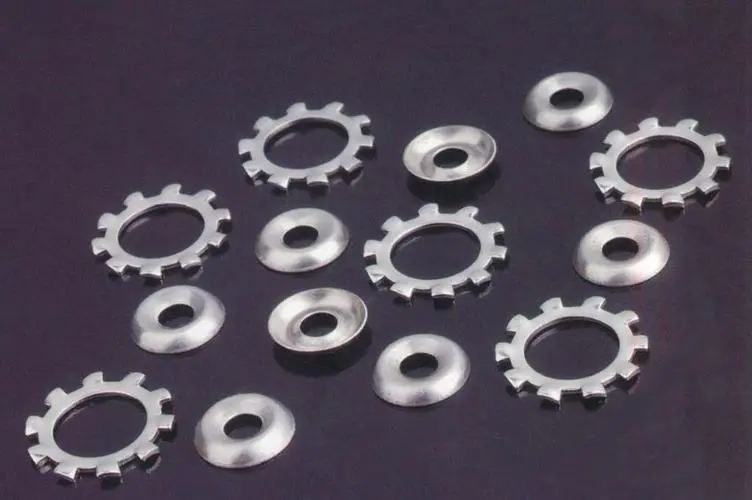spring washer general tolerances products
Understanding Spring Washer General Tolerances in Engineering Applications
Spring washers are essential components commonly found in mechanical assemblies, serving primarily to provide tension, absorb shock, and distribute loads evenly across surfaces. They play a pivotal role in preventing loosening of bolts and screws due to vibrations and other mechanical stresses. Given their importance, understanding the general tolerances associated with spring washers is crucial for engineers and manufacturers looking to ensure the integrity and reliability of their assemblies.
What Are Spring Washers?
Spring washers are typically made of metal and come in various shapes and sizes, although the most common form is the disc-shaped washer with a circular cross-section. There are several types of spring washers, including conical washers, star washers, and Belleville washers, each serving unique applications. The design inherently allows these washers to be spring-loaded, providing a resilient force that exerts pressure on the mating surfaces.
Importance of Tolerances
Tolerances refer to the permissible limits of variation in a physical dimension. In the context of spring washers, tolerances are crucial because they directly affect the performance and behavior of the washer when subjected to operational loads. The selection of appropriate tolerances can determine whether a washer will maintain its spring action, fit correctly in its intended application, and provide the necessary support without risk of failure.
General Tolerances for Spring Washers
When engineering spring washers, it’s common practice to adhere to certain general tolerances outlined by relevant standards such as ISO (International Organization for Standardization) or ANSI (American National Standards Institute). These standards specify acceptable limits of deviation for various dimensions, including diameter, thickness, and internal and external axial variations.
1. Diameter Tolerances For spring washers, the outer and inner diameters must be precisely controlled to ensure a proper fit on bolts or screws. The tolerance values might typically range from ±0.1 mm to ±0.5 mm, depending on the washer's size and material properties.
2. Thickness Tolerances The thickness of a spring washer is crucial for its ability to perform under load. Usually, the tolerances for thickness can vary between ±0.05 mm to ±0.3 mm, reflecting the need for accuracy in maintaining the spring function.
spring washer general tolerances products

3. Flatness and Straightness Tolerances To ensure optimal functionality, the flatness and straightness of spring washers are monitored. These tolerances might specify that deviations should not exceed certain limits, often in the range of 0.1% of the specified thickness or diameter.
4. Material Tolerances The choice of material also plays a significant role in determining tolerances. Different metals exhibit varying strengths, flexibility, and corrosion resistance. The tolerances can differ significantly between materials like stainless steel and carbon steel due to these intrinsic properties.
Benefits of Adhering to Tolerances
1. Enhanced Performance Adhering to specified tolerances ensures that spring washers properly fit their associated fasteners, which is critical for maintaining tension and preventing loosening.
2. Reduced Failures By ensuring washers meet stringent tolerances, manufacturers can significantly reduce the risk of mechanical failures in critical applications, leading to enhanced safety and reliability.
3. Improved Efficiency Properly toleranced components reduce the likelihood of wear over time, which can lead to maintenance and replacement costs. This efficiency translates into longer operational lifespans for machinery and equipment.
4. Interchangeability Standardizing tolerances allows for interchangeable parts, which streamline production processes and facilitate repairs while reducing inventory complexity.
Conclusion
In summary, understanding the general tolerances associated with spring washers is integral to successful engineering practices. These tolerances affect performance, reliability, and safety across a multitude of applications, from automotive to aerospace industries. Engineers must consider these parameters carefully during the design and manufacturing phases to ensure optimal functionality and minimize operational risks. By adhering to established standards for spring washers, manufacturers not only improve the quality of their products but also advance the overall efficiency and dependability of their engineering solutions.
-
Top Choices for Plasterboard FixingNewsDec.26,2024
-
The Versatility of Specialty WashersNewsDec.26,2024
-
Secure Your ProjectsNewsDec.26,2024
-
Essential Screws for Chipboard Flooring ProjectsNewsDec.26,2024
-
Choosing the Right Drywall ScrewsNewsDec.26,2024
-
Black Phosphate Screws for Superior PerformanceNewsDec.26,2024
-
The Versatile Choice of Nylon Flat Washers for Your NeedsNewsDec.18,2024










